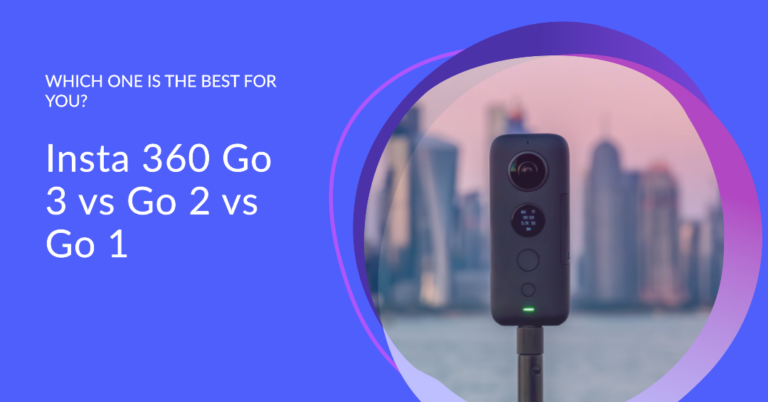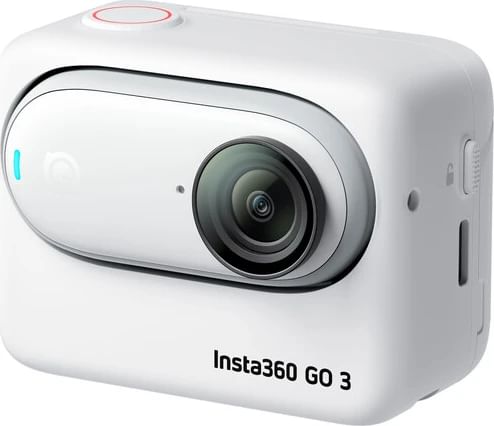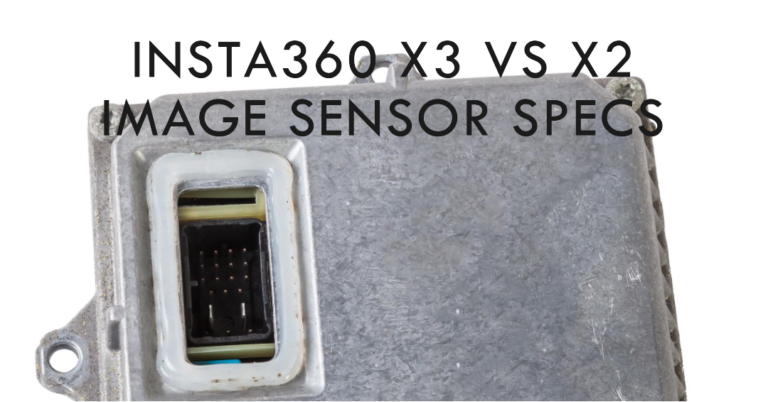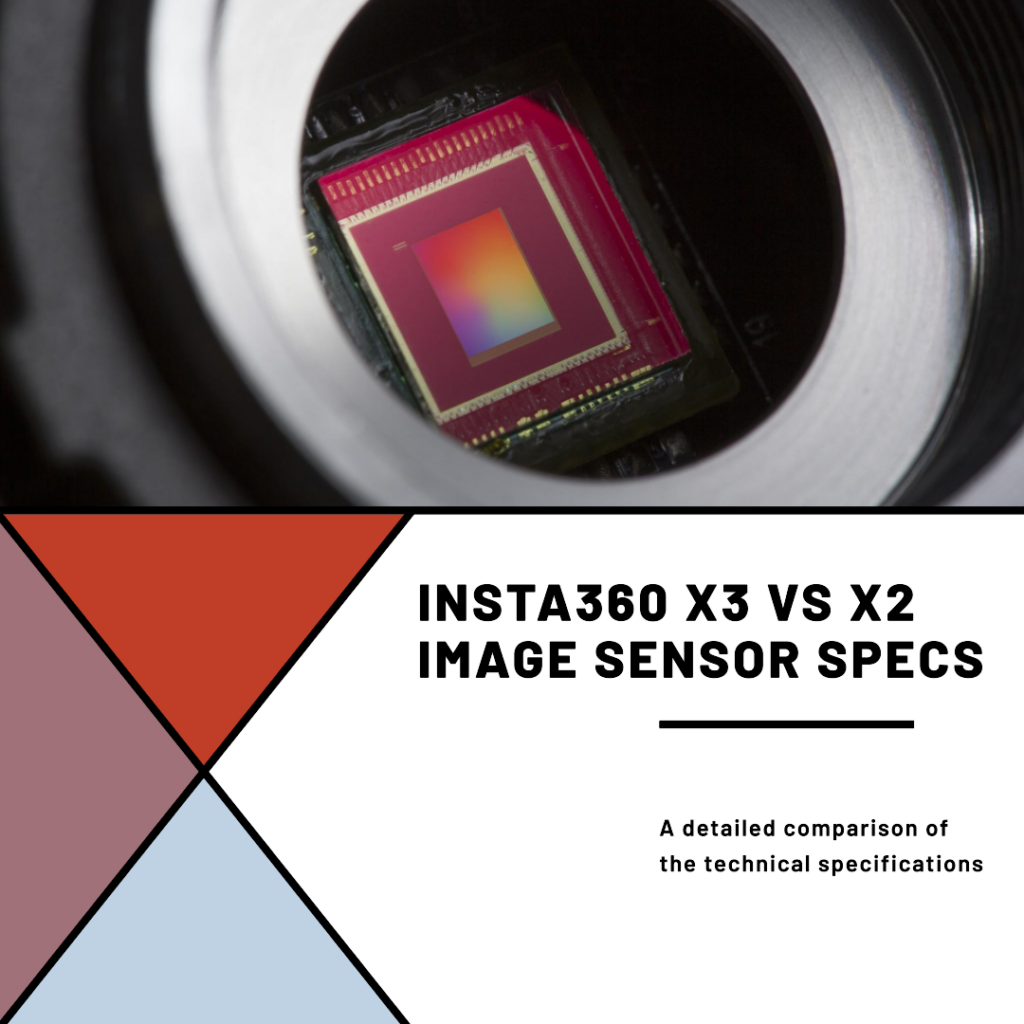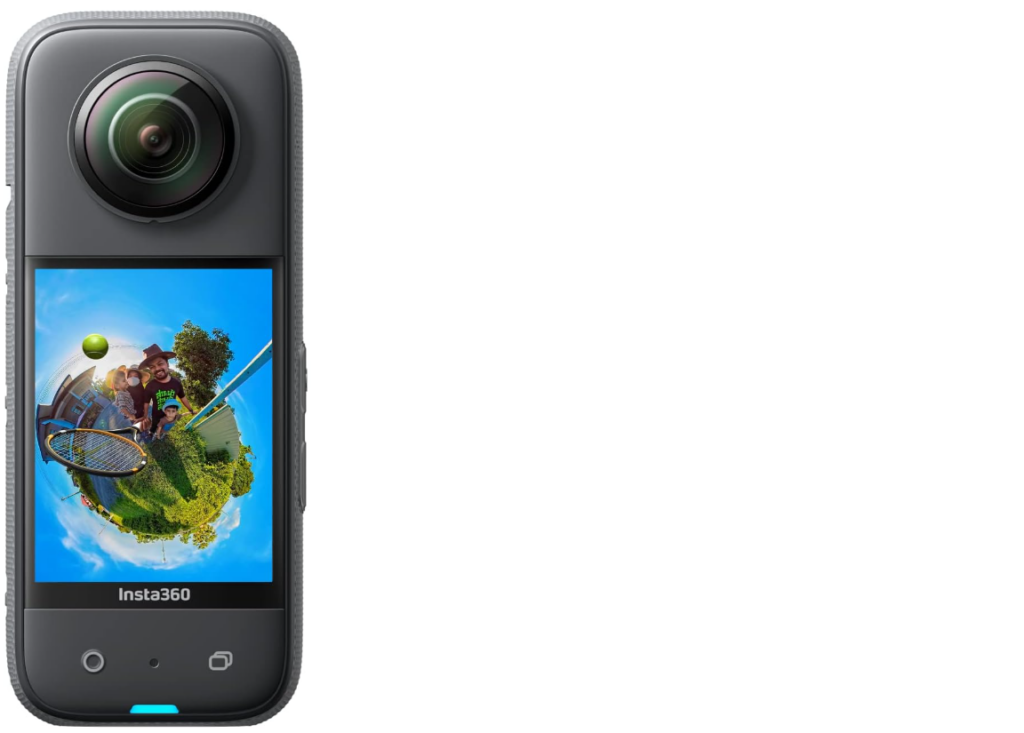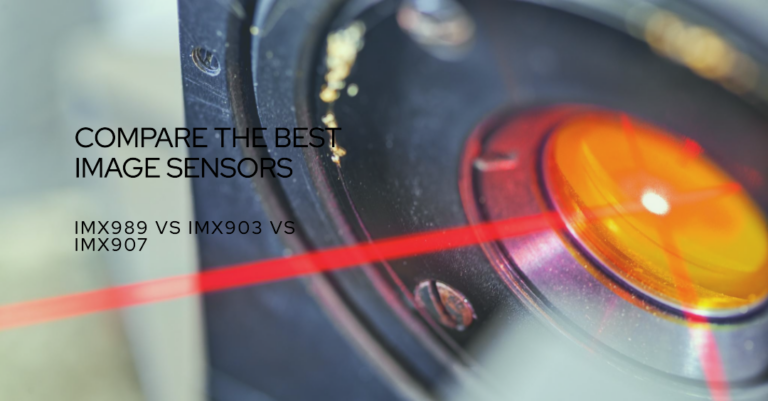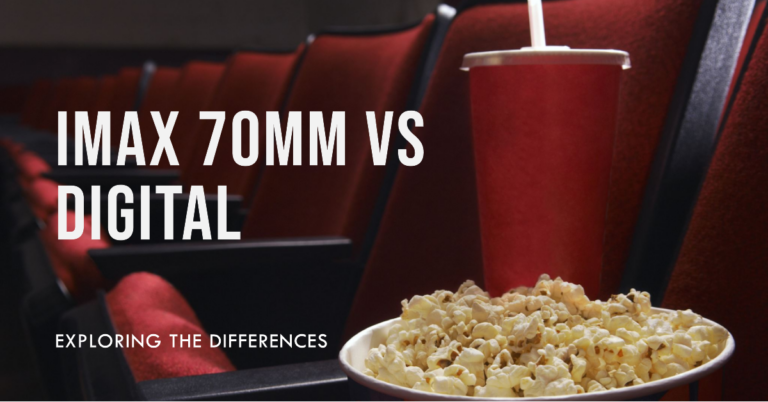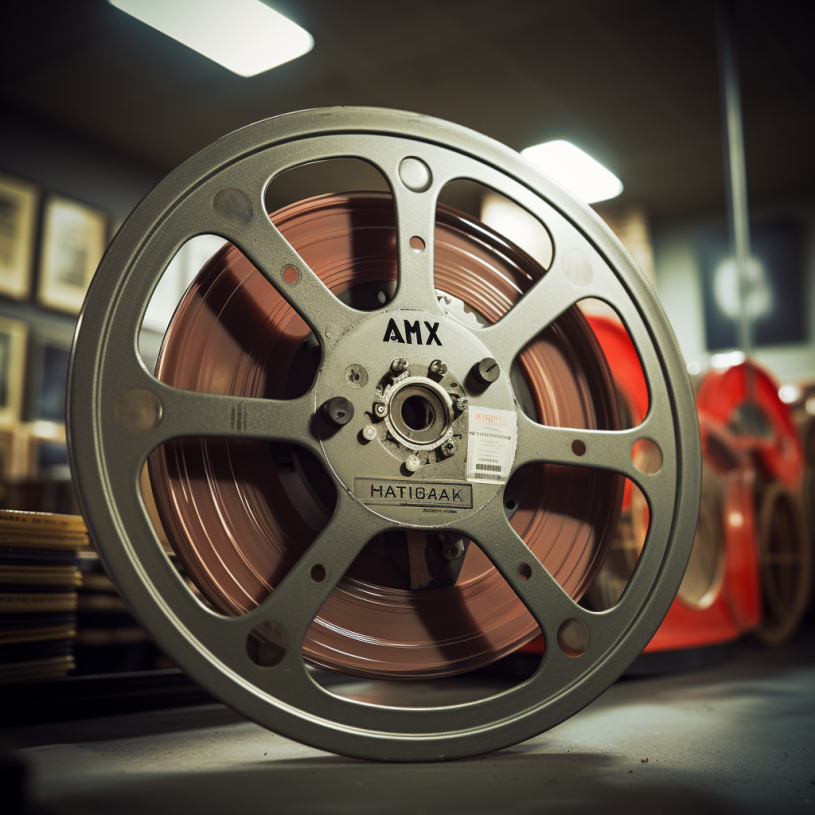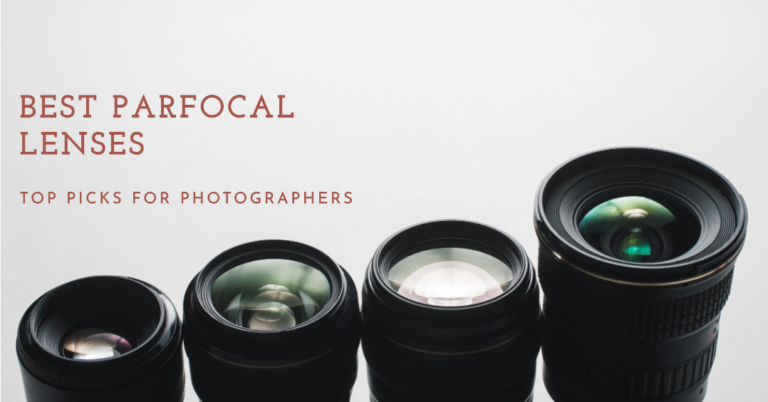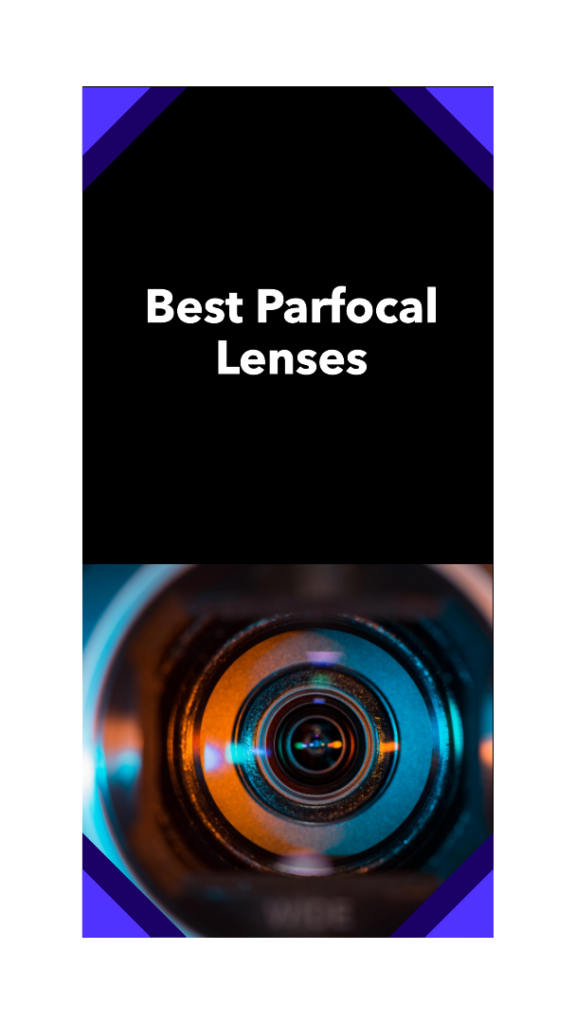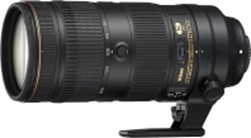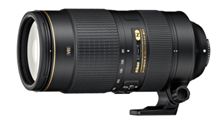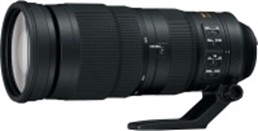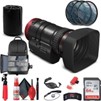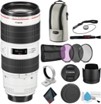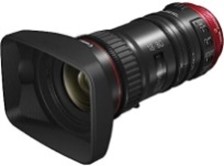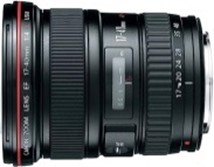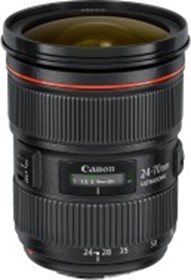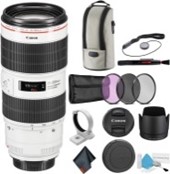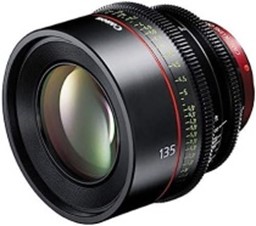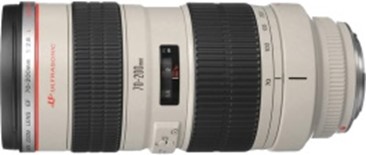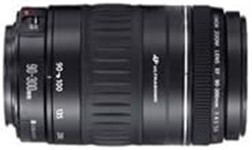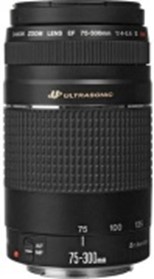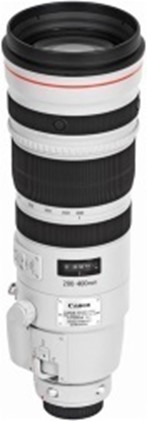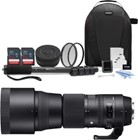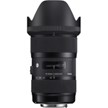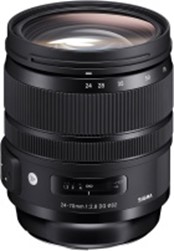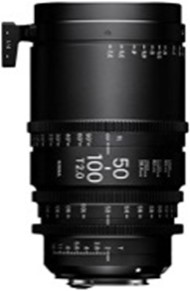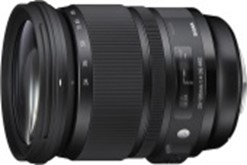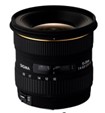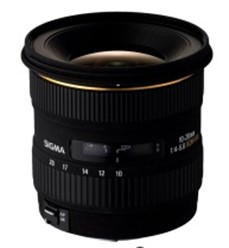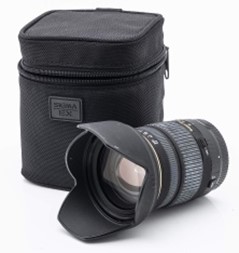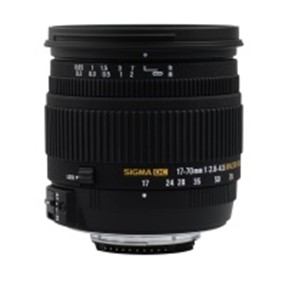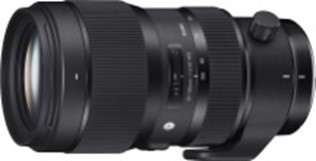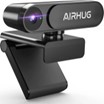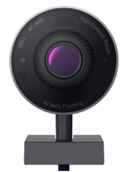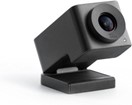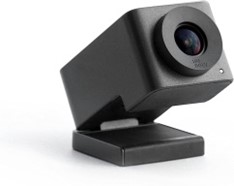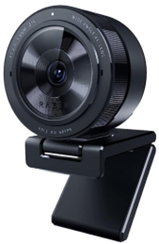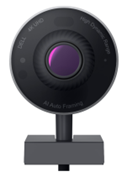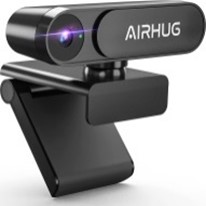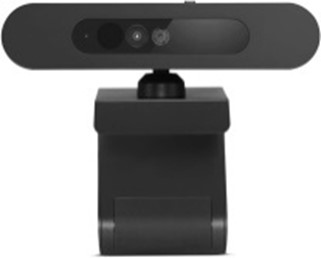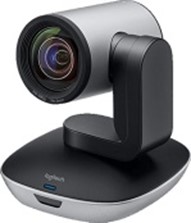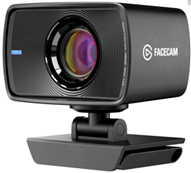In this post, we have curated a list of Mirrorless Cameras with best Dynamic Range.
High Dynamic Range (HDR) indicates the difference between the darkest and brightest values your camera can capture. Usually, it is measured in “stops” of light or Exposure Values (EVs). Every stop is a double or half of the light level. One stop represents the amount of light that is needed to double the exposure. For example, a camera with a dynamic range of 15 stops can capture 15 times more light than one with a dynamic range of 10 stops.
Also Read: Cameras with built-in HDR Mode
Generally, full-frame cameras boast a better dynamic range than APS-C cameras. The reason is that full-frame sensors are bigger, allowing them to capture more light. Certain APS-C cameras, too, present a decent dynamic range.
Let’s get into the details of the mirrorless cameras with the best dynamic range:
18. Hasselblad X1D II 50c: (14 stops)
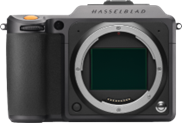 Check on Amazon
Check on Amazon
This camera’s upgraded electronic platform contains enhanced EVF and a huge 3.6-inch touch display. They provide a quick user interface control and a fast live view refresh rate. The creative possibilities are infinite, with a wide range of high-quality optics to shoot with (including HC/HCD, XCD, XPan, and V System lenses).
The huge 50 MP medium format CMOS sensor is individually calibrated for optimal performance. It presents a huge dynamic range (14 stops) and an excellent color depth. Hasselblad Natural Color Solution technology implements the camera system, delivering excellent true-to-life tones resembling the human eye.
| Form factor | Mirrorless |
| Photo Sensor Size | Full Frame (35mm) |
| Photo Sensor Technology | CMOS |
| Auto Focus Technology | Contrast Detection |
| Maximum Focal Length | 45 Millimeters |
| Compatible Mountings | Micro Four Thirds |
| Connectivity Technology | Wi-Fi, USB |
| Wireless Communication Technology | Wi-Fi |
| Flash Memory Type | SD Card |
| Hardware Interface | USB, USB Type C |
| Expanded ISO Maximum | 51200 |
| Screen Size | 3.6 inches |
| Dimensions and weight | 9.3 x 8.9 x 5.2 inches; 8.75 pounds |
| Included accessories | Battery Charger, Shoulder Strap, Battery, SD Card |
17. Panasonic Lumix S1R: (15 stops)
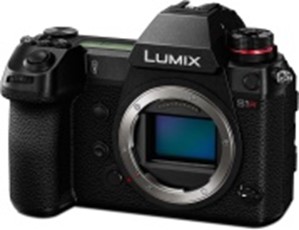
Check on Amazon
S1R uses the latest L-Mount standard, presenting a balanced, big inner diameter and compact dimensions for a flange focus. Hence, you will realize optimum performance and size as a digital mirrorless camera system. The camera is well-known for offering excellent video recording performance (4K 60p/50p), a rugged design, durability, intuitive control, and expandability.
The built-in 47.3MP CMOS sensor presents perfect focus, realistic detail, and image stabilization systems for excellent clarity and more. You can shoot vertically at high and low angles with a 3.2-inch tilt rear monitor with an RGBW LCD. Moreover, white (W) pixels maximize brightness for excellent visibility, even in sunlight.
The intuitive body design groups together frequently used shooting controls within the thumb’s reach. The high-speed processing Venus Engine and Body I.S. (Image Stabilizer) automatically capture eight successive images. Hence, they provide 187 MP equivalent RAW files.
A fast, precise AF system based on advanced lens control technology, the sensor, and the latest Venus Engine lets the user capture the accurate moment in the finest detail. The optimized sensor tuning has high sensitivity. It ensures accurate autofocus in starlight and low-contrast scenes. With 9 AF modes, the camera obtains excellent full-frame focus even in dim light situations.
Specifications:
| Form factor | Mirrorless |
| Photo Sensor Size | Full Frame (35mm) |
| Photo Sensor Technology | CMOS |
| Effective Still Resolution | 47.3 MP |
| Auto Focus Technology | Contrast Detection |
| White balance settings | Auto |
| JPEG quality level | Basic, Fine, Normal |
| Flash Modes Description | Flash Override, Red-Eye Reduction, Slow Shutter, Automatic |
| Video Capture Format | 4k |
| Video Capture Resolution | 4K UHD 2160p |
| Lens Type | interchangeable |
| Compatible Mountings | L Mount |
| Focus Type | Auto Focus |
| Maximum Focal Length | 35 Millimeters |
| Expanded ISO Maximum | 25600 |
| Min Shutter Speed | 1/8000 seconds |
| Exposure Control Type | aperture-priority |
| Metering Description | Evaluative |
| Battery | 1x Li-ion (included) |
| Connectivity Technology | Bluetooth, HDMI |
| Continuous Shooting Speed | 9 |
| Wireless Communication Technology | BuiltIn; 802.11ac + Bluetooth |
| Special Feature | Wireless |
| Water Resistance Level | Water Resistant |
| Hardware Interface | AV Port |
| Viewfinder Type | Electronic |
| Display | 3.2-inch OLED |
| Touchscreen type | Capacitive |
| Processor Description | venus engine |
| Dimensions and weight | 8 x 8 x 6 inches; 1 pound |
Pros:
Cons:
16. Sony ILME-FX30: (14 stops)
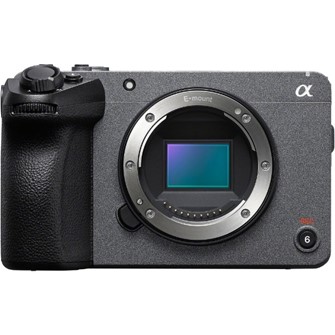 Check on Amazon
Check on Amazon
With the latest 26 MP APS-C Exmore R CMOS sensor, the Sony FX30 benefits aspiring filmmakers and everyday content creators with a powerful and accessible cinema camera. The mentioned sensor and BIONZ XR processor let the camera generate superior quality 4K images with the Super 35 mm (16:9) area.
The dual-base ISO architecture improves low-light performance. Full pixel readout from the 6K sensor generates superior quality UHD 4K video @ up to 60 fps. The camera allows high-speed shooting in 4K @ up to 120 fps with a 1.6x crop and in Full HD @ up to 240 fps. The HDMI output allows 16-bit raw video to choose distinctly available recorders.
Specifications:
| Photo Sensor Technology | APS-C |
| Auto Focus Technology | Phase Detection |
| Camera Flash | Studio |
| Video Capture Format | 4k |
| Video Capture Resolution | 2160p |
| Video Standard | XAVC S, XAVC |
| Lens Type | Zoom |
| Compatible Mountings | Sony E |
| Maximum Focal Length | 20 Millimeters |
| Minimum Focal Length | 10 Millimeters |
| Connectivity Technology | HDMI |
| Continuous Shooting Speed | 120 fps |
| Wireless Communication Technology | Wi-Fi |
| Flash Memory Type | SDXC |
| Special Feature | Low Light |
| Item weight | 7.8 pounds |
| Included accessories | 1 x Sony E 10-20mm f/4 PZ G Lens , 1 x Sony 64GB SF-G Tough Series UHS-II SDXC Memory Card, 1 x 3 Piece Filter Kit, 1 x Wide Angle Lens, 1 x Telephoto Lens, 1 x Tulip Lens Hood, 1 x Soft Bag, 1 x NP-FZ100 Battery, 1 x NP-FZ100 charger, 1 x Corel Photo Software With PhotoMirage, AfterShot, Painter Essentials, PaintShop Pro, and Video Studio, 1 x 12 inch Flexible Tripod, 1 x Hand Strap, 1 x Memory Card Wallet, 1 x Lens Cap Keeper, 1 x Cleaning Kit, 1 x HDMI Cable |
15. Sony ZV-E1 full-frame vlog camera: (15 stops)
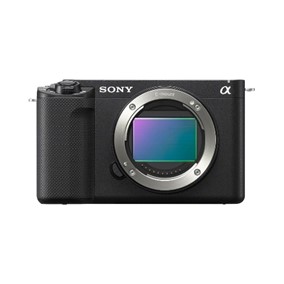 Check on Amazon
Check on Amazon
Sony ZV-E1 is the world’s lightest, smallest full-frame interchangeable lens vlog camera. Its key components are a BIONZ X image processing engine and a huge full-frame image sensor. They generate superior-quality imagery with elegant natural bokeh and high sensitivity.
The E-mount interchangeable lens system provides a huge selection to match your style. The advanced audio options, flip-out vari-angle LCD, and features specifically for vlogging make this an ideal camera for content creators.
AI-based Framing Stabilizer retains a continuous subject position within the frame. The multiple Face Recognition feature automatically optimizes the depth of field for groups or selfies. Dynamic active Mode and 5-axis in-body image stabilization guarantees stable recording. Flexible ISO Log shooting mode provides decent exposure setting freedom.
Real-time recognition and a dedicated AI processor lead to precise subject tracking. The camera body is moisture and dust-resistant for use in challenging situations. The breathing Compensation function suppresses image shifts when focusing.
Specifications:
| Form factor | Mirrorless |
| Photo Sensor Size | Full Frame (35mm) |
| Photo Sensor Technology | CMOS |
| Effective Still Resolution | 12.9 MP |
| Maximum Webcam Image Resolution | 12.9 MP |
| Auto Focus Technology | Phase Detection |
| Image Stabilization | Digital |
| Video Capture Format | 4K |
| Video Capture Resolution | 2160p, 1080p |
| Video Standard | AVCHD |
| Optical Zoom | 2x |
| Compatible Mountings | Sony E |
| Focus Type | Manual Focus, Auto Focus |
| Expanded ISO Maximum | 409600 |
| Expanded ISO Minimum | 80 |
| Max Shutter Speed | 1/8000 seconds |
| Min Shutter Speed | 30 seconds |
| Display | 3-inch LCD |
| Display Fixture Type | Articulating |
| Dots per screen area | 1,036,800 Dot |
| Compatible Devices | Smartphone |
| Lens compatibility | All Sony E-mount lenses |
| Connectivity Technology | Bluetooth, Wi-Fi |
| Flash Memory Type | SD Card |
| Dimensions | 2.1 x 4.8 x 2.8 inches |
| Included accessories | Camera Body + Deco Gear Photography Accessories Bundle |
Pros:
Precise subject tracking
Ensures stable recording.
High-quality live streaming
Easy, stable smartphone connectivity
Quick access to frequently used menu items
Cons:
14. Fujifilm GFX 100:
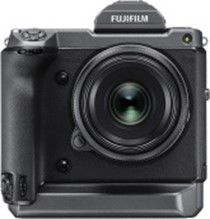 Check on Amazon
Check on Amazon
In this camera, the combination of a blazing-fast X-processor 4 processing engine and the latest back-illuminated 102 MP imaging sensor can output 16-bit images. The output shows rich shadow detail, excellent color fidelity, and wide dynamic range. The mentioned processor immediately optimizes the data from the high-resolution, fast image sensor.
It is the first Fujifilm camera with a vertical grip integrated design. Moreover, it is the first large format system to support in-body stabilization. It lets filmmakers expand the limits of wide format 4K/30P motion capture.
Being weather-sealed at 95 points, the camera can withstand severe conditions of moisture, dust, and low temperatures.
G Mount has a small flange focal distance that leads to the camera’s compact form. When this mount is combined with a large CMOS sensor, the camera system avoids peripheral light fall-off. So, it presents spectacular edge-to-edge sharpness.
Specifications:
| Form factor | Medium Format |
| Photo sensor size | Medium Format (>35mm) |
| Photo Sensor Technology | CMOS |
| Effective Still Resolution | 100 MP |
| Maximum Webcam Image Resolution | 102 MP |
| Display Resolution Maximum | 2360000 Dots |
| Auto Focus Technology | Contrast Detection |
| Aspect Ratio | 7:6, 16:9, 1:1, 3:2, 65:24, 4:3, 5:4 |
| White balance settings | Auto, Incandescent, Color Temperature, Underwater, Fluorescent, Custom, Shade |
| Self Timer Duration | 2 seconds, 10 seconds |
| Camera Flash | Hotshoe |
| Image Stabilization | Sensor-shift |
| Flash Modes Description | First-Curtain Sync, Hi-Speed Sync, Manual, Second-Curtain Sync, Slow Sync, TTL Auto |
| Flash Sync Speed | 1/125 Second (Focal Plane Shutter) |
| Supported Image Format | JPEG, Raw, TIFF |
| Video Capture Format | 4k |
| Video Capture Resolution | 4K DCI 2160p |
| Video Input Format | NTSC/PAL |
| Video Standard | MPEG 4 |
| Color Depth | 16 Bits |
| Lens Type | Wide Angle |
| Optical Zoom | 1 x |
| Camera Lens Description | Built-in 5-axis sensor-shift image stabilization |
| Compatible Mountings | Fujifilm G |
| Focus Type | Continuous-Servo AF, Manual Focus, Single-Servo AF |
| Maximum Focal Length | 55 Millimeters |
| Minimum Focal Length | 9 Millimeters |
| Expanded ISO Minimum | 100 |
| Exposure Control Type | Manual |
| Metering Description | Average, Center-Weighted Average, Multiple, Spot |
| Shooting Modes | Bulb Mode, Aperture Priority, Manual, Program, Shutter Priority |
| Viewfinder Magnification | 0.86x |
| Viewfinder Type | Electronic |
| Display | 3.2-inch LCD |
| Display Fixture Type | Tilting |
| Battery | 2x NP-T125 Rechargeable Lithium-Ion, 1230 mAh (approx. 800 shots) |
| Continuous Shooting Speed | 8 fps |
| Controller Type | Remote Controller |
| Wireless Communication Technology | Bluetooth, Wi-Fi |
| Flash Memory Type | Dual Slot: SD/SDHC/SDXC (UHS-II) |
| Memory Slots Available | 2 |
| Special Feature | Interval Recording |
| Digital Recording Time | Up to 60 Minutes for DCI 4K (4096 x 2160) @ 23.98p/24.00p/25p/29.97p, Up to 80 Minutes for DCI 2K (2048 x 1080) @ 23.98p/24.00p/25p/29.97p/50p/59.94p |
| Dimensions and weight | 10 x 8 x 8 inches; 1.4 kg |
Pros:
Lightweight yet robust body
Handles various shooting conditions.
Efficient and cutting-edge processing engine
Cons:
13. Nikon Z7:
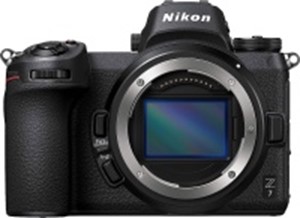 Check on Amazon
Check on Amazon
Z7 is Nikon’s first FX-format mirrorless camera with a 45.7 effective resolution. It makes the most of the NIKKOR Z lenses and large Z mount’s (55 mm) optical performance.
493-point hybrid AF system achieves excellent focusing accuracy. The latest EXPEED 6 image-processing engine captures abundant light to provide sharper images and faster performance and shows a selection of new lens designs.
The improved light capture lets you shoot at sensitivities as low as ISO 64 (upgradeable to ISO 32). 493 on-sensor AF points encompass approx. 90% of the frame vertically and horizontally for fast and precise subject capture.
Auto Area AF tracks and retains the focus on a subject even when the subject momentarily turns away from the camera or goes out of view. The 4K UHD & 8K time-lapse movie and 10-bit N-Log fulfill the needs of video creators.
Specifications:
| Form factor | Mirrorless |
| Photo sensor size | APS-C |
| Photo Sensor Technology | CMOS |
| Effective Still Resolution | 45.7 MP |
| Maximum Webcam Image Resolution | 46.89 MP |
| Display Resolution Maximum | 2100000 pixels |
| Auto Focus Technology | Phase Detection, Contrast Detection |
| Frame Rate | Up to 120 fps |
| Processor Description | EXPEED 6 |
| White balance settings | Auto, Incandescent, Daylight, Color Temperature, Fluorescent, Cloudy, Shade, Flash torch |
| Self Timer Duration | 2 seconds, 20 seconds, 10 seconds, 5 seconds |
| JPEG quality level | Basic, Fine, Normal |
| Camera Flash | Hotshoe |
| Image Stabilization | Sensor-shift |
| Flash Modes Description | iTTL |
| Flash Sync Speed | 1/200 sec |
| Supported Image Format | JPEG, RAW, TIFF |
| Video Capture Format | MPEG-4 |
| Video Capture Resolution | 4K UHD 2160p, FHD 1080p |
| Video Input Format | NTSC/PAL |
| Color Depth | 14 Bits |
| Video Output Interface | 3.5mm audio, HDMI, USB |
| Lens Type | body only |
| Optical Zoom | 1 x |
| Digital Zoom | 0.3 x |
| Maximum Aperture | 2 f |
| Minimum Aperture | 2 |
| Autofocus Points | 493 |
| Compatible Mountings | Nikon Z, Nikon F |
| Focus Type | Manual Focus, Auto Focus |
| Maximum Focal Length | 70 Millimeters |
| Minimum Focal Length | 11.81 Inches |
| Expanded ISO Maximum | 102400 |
| Expanded ISO Minimum | 32 |
| Max Shutter Speed | 1/8000 seconds |
| Min Shutter Speed | 30 seconds |
| Exposure Control Type | Manual, Automatic |
| Metering Description | Matrix, Center-weighted, spotlight, highlight |
| Shooting Modes | P/S/A/M |
| Viewfinder Magnification | 0.8x |
| Viewfinder Type | Electronic |
| Display | 3.2-inch LCD, capacitive touchscreen |
| Display Fixture Type | Tilting |
| Battery | 1xLi-ion, 2000 mAh capacity |
| Connectivity Technology | Bluetooth, Wi-Fi |
| Continuous Shooting Speed | 9 fps |
| Wireless Communication Technology | Bluetooth, Wi-Fi |
| Flash Memory Type | XQD, CF Express |
| Memory Slots Available | 1 |
| Memory Storage Capacity | 32 GB |
| Special Feature | Magnet-Proof, Shockproof, Static Proof, Temperature Extremes, UV Light Resistant, X-Ray Proof |
| Digital Recording Time | Up to 29 Minutes, 59 Seconds |
| Diaphragm Blades | 7 |
| Hardware Interface | USB Type C, Bluetooth 4.0, 802.11 ac/b/g/n |
| Audio Recording | Yes |
| Audio Output Type | Headphones |
| Dimensions and weight | 5.3 x 2.7 x 4 inches; 1.3 pounds |
| Included accessories | EN-EL15b Rechargeable Li-ion Battery, MH-25a Battery Charger, UC-E24 USB Cable, HDMI/USB Cable Clip, BS-1 Accessory Shoe Cap, AN-DC19 Strap, BF-N1 Body Cap, DK-29 Rubber Eyecup |
Pros:
Cons:
12. Sony α7S II E-mount Camera: (14 stops)
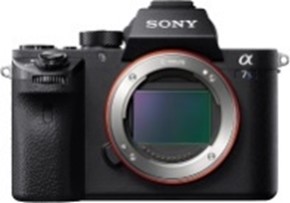 Check on Amazon
Check on Amazon
The 12.2 MP full-frame Exmor CMOS sensor and powerful BIONZ X image processor let this camera shoot at a sensitivity range (of ISO 50-4096004) with excellent dynamic range.
It is the world’s first camera to provide internal 4K movie recording in the full-frame format with full pixel readout and without pixel binning or line skipping. So, it provides images that show higher resolution and less jaggies than standard 4K movies.
You can shoot 4K in the super 35mm format and capture 4K QFHD output or uncompressed 4:2:2 Full HD through HDMI to 3rd party external recorders (optional).
The low SNR ratio generated by the image sensor triggers the Fast Intelligent AF to sense contrast easily and quickly respond in low-light situations.
The 5-axis SteadyShot inside image stabilization mechanism is fine-tuned for 4K video recording.
The latest picture profile settings are Cine/S-Log3, S-Gamut3, and S-Gamut3/S-Log3. They enhance video functionality, simplify color correction, and provide a broad dynamic range (up to 1300%).
Specifications:
| Form factor | Compact-DSLR |
| Photo sensor size | Full Frame (35 mm) |
| Photo Sensor Technology | CMOS |
| Effective Still Resolution | 12.2 MP |
| Maximum Webcam Image Resolution | 12.9 MP |
| Display Resolution Maximum | 1,228,800 dots resolution |
| Auto Focus Technology | Contrast Detection |
| Aspect Ratio | 16:9, 1:1, 3:2, 4:3 |
| Frame rate | Up to 120 fps shooting in full-HD resolution |
| White balance settings | Auto, Incandescent, Daylight, Underwater, Fluorescent, Custom, Cloudy, Flash torch, Shade |
| Self Timer Duration | 2 seconds, 10 seconds, 5 seconds |
| JPEG quality level | Basic, Fine, Normal |
| Camera Flash | Hotshoe |
| Image Stabilization | Sensor-shift |
| Flash Modes Description | Auto, Fill Flash, Hi-Speed Sync, Off, Rear Sync, Red-Eye Reduction, Slow Sync, Wireless |
| Flash Sync Speed | 1/250 Second |
| Supported Image Format | JPEG, RAW |
| Video Capture Format | 4K |
| Video Capture Resolution | FHD 1080p |
| Video encoding | NTSC/PAL |
| Color Depth | 14 Bits |
| Video Output Interface | HDMI |
| Lens Type | Fisheye |
| Optical Zoom | 1 x |
| Digital Zoom | 4 x |
| Zoom Type | optical |
| Compatible Mountings | Sony Mirrorless |
| Focus Type | Automatic only |
| Maximum Focal Length | 35 mm |
| Expanded ISO Maximum | 51200 |
| Max Shutter Speed | 1/250 seconds |
| Min Shutter Speed | 1/8000 seconds |
| Exposure Control Type | Aperture Priority, Auto, Manual, Program, Shutter Priority |
| Metering Description | Center-weighted average, Multiple Spot |
| Shooting Modes | Portrait, sports action, macro, landscape, and more |
| Viewfinder Magnification | 0.78x |
| Viewfinder | Electronic; ZEISS T Coating guarantees the sharp reduction of reflections on the viewfinder |
| Display | 3-inch LCD |
| Display Fixture Type | Articulating |
| Battery | 1xLi-ion |
| Removable Memory | SDHC |
| Digital Scene Transition | Zoom |
| Connectivity Technology | USB, HDMI, NFC |
| Continuous Shooting Speed | 5 |
| Controller Type | Remote |
| Wireless Communication Technology | NFC, Wi-Fi |
| Flash Memory Type | SDXC |
| Memory Slots Available | 1 |
| Special Feature | BIONZ X Image Processor; 5-Axis SteadyShot INSIDE Image Stabilization; S-Log3 Gamma and Display Assist Function |
| Digital Recording Time | Up to 29 Minutes, 59 Seconds |
| Hardware Interface | AV Port |
| Audio Recording | Supported |
| Processor Description | bionz x |
| Dimensions and weight | 9.61 x 6.1 x 5.67 inches; 1.38 pounds |
| Included accessories | Rechargeable Battery NP-FW50, Cable Protector, AC Adapter AC-UUD1, Battery Charger BC-VW1, Shoulder strap, Body cap, Accessory shoe cap, Eyepiece cup, Micro USB cable |
Pros:
Richest, smoothest color quality
Fast, accurate focusing in low light
Detailed low-noise images
Cons:
11. Sony α6700: (14+ stops)
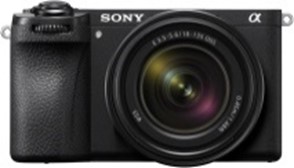 Check on Amazon
Check on Amazon
This premium E-mount APS-C camera has the latest Exmor R CMOS image sensor with 26.01 effective resolution. It provides excellent sensitivity, dynamic range, and resolution. All these are possible due to gapless on-chip lenses, AR coating, and back-illuminated format.
The newest BIONZ XR image processing engine provides realistic colors and natural gradations with low noise for movies and stills. The standard sensitivity varies from a low ISO 100 to ISO 320003. It also provides a broad dynamic range to capture natural gradations in high-contrast scenes without blocked shadows or blown highlights.
The 5-axis in-body optical image stabilization system lets you shoot handheld or in low light. It is powered by precision gyro sensors that provide up to 5-steps of shake compensation.
For the first time in the history of APS-C cameras, the α6700 contains the HEIF format with smooth 10-bit gradations. So, the camera offers realistic reproduction of portrait skin tone and skies.
Specifications:
| Form factor | Mirrorless |
| Photo sensor size | APS-C |
| Photo Sensor Technology | CMOS |
| Effective Still Resolution | 26 MP |
| Maximum Webcam Image Resolution | 26 MP |
| Video Capture Resolution | 2160p |
| Display Resolution Maximum | 1.03M Pixels |
| Auto Focus Technology | Face Detection, Eye Detection |
| Video Capture Format | XAVC |
| Video Standard | AVCHD |
| Expanded ISO Maximum | 32000 |
| Expanded ISO Minimum | 100 |
| Max Shutter Speed | 1/8000 seconds |
| Min Shutter Speed | 30 seconds |
| Exposure Control Type | Aperture Priority, Auto, Manual, Program, Shutter Priority |
| Shooting Modes | Movie |
| Lens Type | Telephoto |
| Optical Zoom | 1 |
| Digital Zoom | 2 x |
| Maximum Aperture | 3.5 f |
| Minimum Aperture | 36 f |
| Autofocus Points | 759 |
| Camera Lens Description | 18-135mm F3.5-5.6 zoom lens |
| Compatible Mountings | Sony E |
| Focus Type | Auto Focus, Manual Focus |
| Maximum Focal Length | 135 Millimeters |
| Minimum Focal Length | 18 Millimeters |
| Viewfinder Magnification | 1.07x |
| Viewfinder Type | Electronic |
| Display | 3 inches LCD |
| Display Fixture Type | Articulating |
| Battery | 1x Li-ion |
| Connectivity Technology | Wi-Fi |
| Continuous Shooting Speed | 11 fps |
| Wireless Communication Technology | Wi-Fi |
| Special Feature | Face Detection |
| Diaphragm Blades | 7 |
| Dimensions and weight | 4.8 x 2.72 x 2.5 inches; 1.6 pounds |
Pros:
Accurate compensation at the single-pixel level
Adjustable parameters suit the scene or subject
Easy access to shutter speed
Excellent build quality
Cons:
- No stable connection between the camera and the devices
10. Sony Alpha 7C: (15 stops)
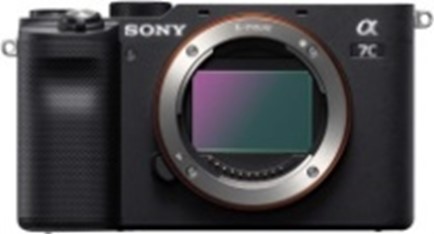 Check on Amazon
Check on Amazon
Sony Alpha 7C is the world’s lightest and smallest full-frame camera. It is perfect for photography and vlogging. Two key components are an advanced BIONZ X processing engine and front-end LSI.
The 5-axis in-body image stabilization lets you shoot images and capture video without a camera shake, irrespective of the lens attached and without a gimbal or tripod. The camera obtains low noise and high sensitivity with a wide ISO range (ISO 50 – 2048006) and a wide 15-stop dynamic range.
The 3-inch touch-sensitive LCD panel has a side-opening vari-angle system for flexible monitor positioning.
Real-time AF Tracking implements artificial intelligence to track moving subjects while shooting movies or stills steadily.
Specifications:
| Form factor | Mirrorless |
| Photo sensor size | Full Frame (35 mm) |
| Photo Sensor Technology | CMOS |
| Effective Still Resolution | 24.2 MP |
| Maximum Webcam Image Resolution | 25.3 MP |
| Display Resolution Maximum | 921600 Dots |
| Auto Focus Technology | Eye Detection |
| Aspect Ratio | 16:9, 1:1, 3:2, 4:3 |
| Frame Rate | Up to 120 fps |
| White balance settings | Auto, Incandescent, Daylight, Color Temperature, Underwater, Fluorescent, Custom, Cloudy, Flash torch, Shade |
| Self Timer Duration | 2 seconds, 10 seconds, 5 seconds |
| JPEG quality level | Basic, Fine, Normal |
| Camera Flash | Hotshoe |
| Image Stabilization | Sensor-shift |
| Flash Modes Description | Auto, Fill Flash, Hi-Speed Sync, Off, Rear Sync, Red-Eye Reduction, Slow Sync, Wireless |
| Flash Sync Speed | 1/160 Second |
| Supported Image Format | JPEG, RAW |
| Video Capture Format | 4k |
| Video Capture Resolution | 4K UHD 2160p |
| Video Input Format | NTSC/PAL |
| Video Standard | AVI |
| Color Depth | 14 Bits |
| Video Output Interface | HDMI, USB |
| Lens Type | Zoom |
| Optical Zoom | 1 |
| Digital Zoom | 2 x |
| Maximum Aperture | 5.6 f |
| Minimum Aperture | 22 f |
| Compatible Mountings | Sony E |
| Focus Type | Manual and auto |
| Maximum Focal Length | 35 Millimeters |
| Minimum Focal Length | 11.8 Inches |
| Expanded ISO Maximum | 51200 |
| Expanded ISO Minimum | 50 |
| Min Shutter Speed | 1/8000 seconds |
| Exposure Control Type | Manual |
| Metering Description | Average, Center-Weighted Average, Highlight Weighted, Multi-Zone, Spot |
| Shooting Modes | Auto, Manual, Programmed AE, Aperture Priority, Shutter-speed priority |
| Battery | 1x Li-ion NP-FZ1002, 2000 mAh capacity, captures 740 images12 on a full charge when using the LCD monitor |
| Connectivity Technology | Bluetooth, Wi-Fi |
| Continuous Shooting Speed | 10 fps |
| Wireless Communication Technology | Bluetooth, Wi-Fi |
| Flash Memory Type | Single Slot: SD/SDHC/SDXC (UHS-II) |
| Memory Slots Available | 1 |
| Special Feature | BIONZ X Image Processor; 693-Point Hybrid AF System; 5-Axis SteadyShot INSIDE Image Stabilization |
| Digital Recording Time | Unlimited |
| Diaphragm Blades | 7 |
| Audio Recording | Supported |
| Audio Output Type | Headphones |
| Dimensions and weight | 8.27 x 6.1 x 5.4 inches; 1.1 pounds |
Pros:
Lightweight and compact design
Real-time autofocus tracking
Flexible monitor positioning
Cons:
9. Canon EOS M50 Mark II:
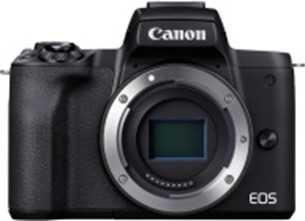 Check on Amazon | Check on Newegg
Check on Amazon | Check on Newegg
This camera offers enhanced eye detection AF (supports still or movie servo AF) and enhanced dual-pixel CMOS AF.
The Auto Lighting Optimizer analyzes the image and minimizes the blown-out areas by retaining detail and color in bright portions of a photo. So you can capture lifelike images.
The content creators can use the EOS M50 Mark II to live stream content with built-in Wi-Fi. EOS Webcam Utility software provides an easy webcam alternative. If you want a different angle, you can shoot vertically and horizontally. The camera provides clean HDMI output, high frame rate, and high-resolution streaming.
Vari-angle touchscreen LCD is perfect for vlogging and different compositions. It lets you easily compose and shoot from any angle.
You can use the Touch & Drag/Face Tracking and the EVF to compose the in-focus shot in a few taps.
Specifications:
| Form factor | Mirrorless |
| Photo sensor size | APS-C |
| Effective Still Resolution | 24.1 MP |
| Maximum Webcam Image Resolution | 25.8 MP |
| Display Resolution Maximum | 2.36 Million Dots |
| Auto Focus Technology | Face Detection |
| Aspect Ratio | 16:9, 1:1, 3:2, 4:3 |
| White balance settings | Auto, Daylight, Color Temperature, Tungsten, Fluorescent, Custom, Cloudy, Shade, Flash torch |
| Self Timer Duration | 2 seconds, 10 seconds |
| JPEG quality level | Basic, Fine, Normal |
| Camera Flash | Hotshoe |
| Image Stabilization | Digital, 5-Axis (Video Only) |
| Flash Modes Description | eTTL |
| Flash Sync Speed | 1/200 Second |
| Supported Image Format | JPEG, Raw |
| Video Capture Format | 4k |
| Video Capture Resolution | 4K UHD 2160p |
| Video Input Format | NTSC/PAL |
| Video Standard | MPEG 4 |
| Color Depth | 14 Bits |
| Lens Type | Zoom |
| Compatible Mountings | Canon EF-M |
| Focus Type | Manual and auto |
| Expanded ISO Maximum | 51200 |
| Expanded ISO Minimum | 100 |
| Max Shutter Speed | 30 seconds |
| Min Shutter Speed | 1/4000 seconds |
| Exposure Control Type | Manual |
| Metering Description | Center-weighted average, Evaluative, Partial, Spot |
| Shooting Modes | Single shooting, Continuous shooting (High-speed continuous shooting, low-speed continuous shooting) |
| Viewfinder Type | Electronic |
| Display | 3-inch LCD |
| Display Fixture Type | Articulating |
| Battery | 1x Li-ion |
| Digital Scene Transition | zoom |
| Connectivity Technology | Wi-Fi, NFC |
| Continuous Shooting Speed | 10 fps |
| Controller Type | Remote |
| Wireless Communication Technology | Bluetooth, Wi-Fi |
| Flash Memory Type | Single Slot: SD/SDHC/SDXC (UHS-I) |
| Special Feature | DIGIC 8 Image Processor; Built-In Flash; Combination 5-Axis Image Stabilization |
| Digital Recording Time | Up to 29 Minutes, 59 Seconds |
| Audio Recording | Supported |
| Dimensions and weight | 4.6 x 2.3 x 3.5 inches; 0.86 pounds |
Pros:
Cons:
8. Sony Alpha a7R III: (15 stops)
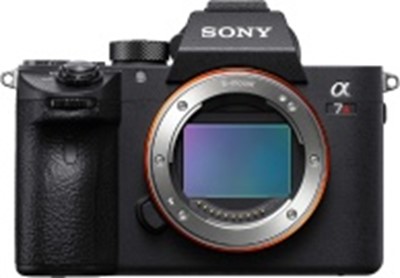 Check on Amazon
Check on Amazon
This Sony camera presents a 15-stop dynamic range, high sensitivity, and noise reduction. It provides fast speed, pro-class operability, high-resolution imaging, and reliable performance even in harsh conditions.
The enhanced EyeAF focuses and tracks an eye with high speed and precision, even when a subject is moving, seeing down, backlit, or away.
Pixel Shift Multi Shooting provides excellent color fidelity, resolution, and texture reproduction. So, it lets the camera capture the atmosphere of the environment and subject.
The back-illuminated Exmor R CMOS sensor (with a gapless on-chip lens) gathers more light. Doubled AF tracking will work even for continuous shooting. It improves stable, lightning-fast camera performance.
Specifications:
| Form factor | Mirrorless |
| Photo sensor size | Full Frame (35 mm) |
| Photo Sensor Technology | CMOS |
| Effective Still Resolution | 42.4 |
| Maximum Webcam Image Resolution | 43.6 MP |
| Display Resolution Maximum | 1,440,000 dots |
| Auto Focus Technology | Eye Detection |
| Frame Rate | Up to 120 fps |
| Processor Description | bionz x |
| White balance settings | Auto, Incandescent, Daylight, Color Temperature, Underwater, Fluorescent, Custom, Cloudy, Flash torch, Shade |
| Self Timer Duration | 2 seconds, 10 seconds, 5 seconds |
| JPEG quality level | Basic, Fine, Normal |
| Camera Flash | Hot Shoe, PC Terminal |
| Image Stabilization | Dynamic |
| Flash Modes Description | TTL |
| Flash Sync Speed | 1/250 Second |
| Supported Image Format | JPEG, RAW |
| Video Capture Format | 4K; HD |
| Video Capture Resolution | FHD 1080p |
| Video Input Format | NTSC/PAL |
| Color Depth | 14 Bits |
| Video Output Interface | 3.5mm audio, HDMI, USB |
| Lens Type | Wide Angle |
| Optical Zoom | 1 x |
| Digital Zoom | 2 x |
| Compatible Mountings | Sony E |
| Focus Type | Auto Focus |
| Min Shutter Speed | 1/8000 seconds |
| Exposure Control Type | Aperture Priority, Auto, Manual, Program, Shutter Priority |
| Metering Description | Evaluative |
| Shooting Modes | AUTO (iAuto), Programmed AE (P), Aperture priority (A), Shutter-speed priority (S), Manual (M), Movie modes |
| Viewfinder Magnification | 0.78x |
| Viewfinder Type | Electronic |
| Display | 3-inch LCD |
| Display Fixture Type | Tilting |
| Touch Screen Type | Capacitive |
| Battery | 1x Li-ion Sony NPFZ100, 2000 mAh |
| Connectivity Technology | Bluetooth, HDMI, NFC |
| Continuous Shooting Speed | 10 fps with AF/AE tracking |
| Wireless Communication Technology | Bluetooth, Wi-Fi |
| Flash Memory Type | Micro SD |
| Memory Slots Available | 2 |
| Special Feature | BIONZ X Image Processor (boosts processing speeds up to 1.8x) and Front-End LSI; 399-Point AF System; 5-Axis SteadyShot INSIDE Stabilization |
| Digital Recording Time | Up to 29 Minutes |
| Supported Audio Format | AC3, Dolby Digital 2ch, Linear PCM (Stereo) |
| Hardware Interface | AV Port |
| Audio Recording | Supported |
| Audio Output Type | Headphones |
| Dimensions and weight | 5 x 3.87 x 3 inches; 1.45 pounds |
| Included accessories | AC adaptor, Battery charger, Micro USB cable, Accessory shoe cap, Shoulder strap, Rechargeable battery, Body cap, Cable protector, Eyepiece cup |
Pros:
Cons:
7. Sony Alpha a7R IV: (15 stops)
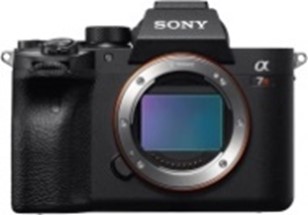 Check on Amazon
Check on Amazon
Sony Alpha a7R IV has the world’s first 61MP full-frame back-illuminated Exmor R sensor. The camera is perfect for travel, professional portraits, and event photographers aspiring for optimal optical performance.
AI-supported Real-time Eye AF offers instant, precise eye detection and tracking for a clear focus on the subject’s face.
The combination of the mentioned sensor and BIONZ X imaging engine offers fine gradations, excellent resolution, and low noise to explore new detail dimensions.
The in-body 5-axis image stabilizer algorithm maximizes high-resolution 61 MP image sensor performance.
‘Focus Priority in Aperture Drive’ offers precise focusing in dim light and whenever aperture is stopped down. The vibration-free shutter maximizes resolution for clear, crisp images.
Specifications:
| Form factor | Compact-DSLR |
| Photo sensor size | Full Frame (35 mm) |
| Photo Sensor Technology | CMOS |
| Effective Still Resolution | 61 MP |
| Maximum Webcam Image Resolution | 61 MP |
| Processor Description | BIONZ X Image Processor |
| Display Resolution Maximum | 9504 x 6336 |
| Auto Focus Technology | Phase Detection, Contrast Detection |
| Aspect Ratio | 1.50:1, 16:9, 4:3 |
| Frame Rate | Up to 120 fps |
| White balance settings | Auto, Daylight, Custom, Cloudy, Flash torch, Shade |
| Self Timer Duration | 2 seconds, 10 seconds, 5 seconds |
| JPEG quality level | Basic, Fine, Normal |
| Camera Flash | Hotshoe |
| Image Stabilization | Sensor-shift |
| Flash Modes Description | Auto, Fill Flash, Hi-Speed Sync, Off, Rear Sync, Red-Eye Reduction, Slow Sync, Wireless |
| Flash Sync Speed | 1/250 sec |
| Supported Image Format | JPEG, RAW |
| Video Capture Format | 4k |
| Video Capture Resolution | 4320p |
| Video Input Format | NTSC/PAL |
| Video Standard | RAW |
| Color Depth | 14 Bits |
| Video Output Interface | 3.5mm audio, HDMI, USB |
| Lens Type | Wide Angle |
| Optical Zoom | 1 x |
| Digital Zoom | 4 x |
| Maximum Aperture | 2.8 f |
| Minimum Aperture | 22 f |
| Autofocus Points | 567 |
| AF precision | Supported at light levels as low as EV-39 |
| Compatible Mountings | Sony E |
| Focus Type | Auto & Manual |
| Minimum Focal Length | 1.2 Feet |
| Expanded ISO Maximum | 102400 |
| Expanded ISO Minimum | 50 |
| Max Shutter Speed | 1/8000 seconds |
| Min Shutter Speed | 1/8000 seconds |
| Exposure Control Type | Manual |
| Metering Description | Center-weighted average, Highlight Weighted, Multiple, Spot |
| Shooting Modes | AUTO (iAuto), Programmed AE (P), Aperture priority (A), Shutter-speed priority (S), Manual (M), Movie modes |
| Viewfinder Magnification | 0.78x |
| Viewfinder Type | Electronic |
| Display | 3-inch LCD |
| Display Fixture Type | Tilting |
| Dots per screen area | 2,359,296 Dot |
| Battery | 1xLi-ion, 2250 mAh capacity |
| Connectivity Technology | Bluetooth, Wi-Fi, USB, HDMI, NFC |
| Continuous Shooting Speed | 10 fps with full AF/AE tracking |
| Wireless Communication Technology | Bluetooth, Wi-Fi |
| Flash Memory Type | Dual Slot: SD/SDHC/SDXC (UHS-II) |
| Memory Slots Available | 2 |
| Special Feature | BIONZ X Image Processor and Front-End LSI; 567-Point Phase-Detection AF System; 5-Axis SteadyShot INSIDE Stabilization |
| Audio Recording | Yes |
| Diaphragm Blades | 9 |
| Audio Output Type | Headphones |
| Dimensions and weight | 9.6 x 6.1 x 5.6 inches; 1.46 pounds |
Pros:
AI-based real-time tracking
Shoot in absolute silence
Precise AF in low-light
Area-specific noise reduction
Cons:
6. Sony A7 IV (15 stops):
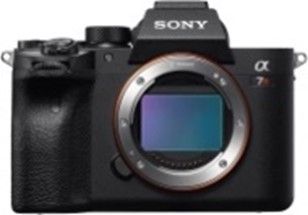 Check on Amazon
Check on Amazon
The α7 IV’s outstanding AI-driven autofocus and true-to-life resolution complement various top-notch features of the advanced imaging technology. The camera is well-known for autofocus, with 759 phase detection (AF points) and 94% coverage.
With advanced still and movie recording performance, the device is the perfect hybrid camera that provides remarkable imagery with on-the-spot delivery and distribution. The 33MP back-illuminated CMOS (full-frame) sensor offers enhanced color reproducibility, 15+stop dynamic range, high AF speed, and low-noise performance.
Full pixel readout without binning enables 4K 60p recording in Super 35 mode. So, it provides high-resolution smooth footage that you can edit. Moreover, you benefit from advanced movie features.
Specifications:
| Form factor | Mirrorless |
| Photo Sensor Size | Full Frame (35mm) |
| Photo Sensor Technology | CMOS |
| Auto Focus Technology | Contrast Detection |
| Effective Still Resolution | 33 MP |
| JPEG quality level | Fine |
| Camera Flash | Studio |
| Flash Modes Description | Auto, Fill Flash, Hi-Speed Sync, Off, Rear Sync, Red-Eye Reduction, Slow Sync |
| Video Capture Format | 4k |
| Video Capture Resolution | 1080p, 2160p |
| Optical Zoom | 2 x |
| Compatible Mountings | Sony E |
| Focus Type | manual-and-auto |
| Expanded ISO Maximum | 51200 |
| Min Shutter Speed | 1/8000 seconds |
| Exposure Control Type | Manual |
| Shooting Modes | Movie |
| Viewfinder Type | Electronic |
| Display | 3-inch LCD |
| Battery | 1x Lithium-ion (included) |
| Connectivity Technology | Wi-Fi, USB |
| Continuous Shooting Speed | 10 fps |
| Wireless Communication Technology | Bluetooth, Wi-Fi |
| Flash Memory Type | SD Card, SDXC |
| Memory Slots Available | 1 |
| Hardware Interface | VGA, USB Type C, USB, SDXC |
| Special Feature | BIONZ XR Processor; 759-Pt. Fast Hybrid AF, Real-time Eye AF; 5-Axis SteadyShot Image Stabilization |
| Dimensions and weight | 5.2 x 3.1 x 3.8 inches; 5 pounds |
| Included accessories | Tripod, Shoulder Strap, Lens Cap, Battery, Body Cap, Eyecup |
Pros:
Groundbreaking performance in still and movie recording
Long lifespan of Z-battery
Robust magnesium alloy body
Cons:
The issue with firmware updates download
5. Fujifilm X-H2S (14 stops):
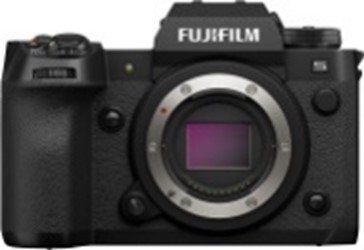 Check on Amazon
Check on Amazon
This camera combines the latest 26.1 MP image sensor, and back-side illuminated technology with a layered, stacked structure that boosts readout speeds four times for faster image processing.
The latest AF prediction algorithm significantly boosts autofocus accuracy and subject tracking on moving objects. The latest X-Processor 5 handles huge data for efficient stills and video processing performance. The mentioned processor and sensor combination offers a 14-stop dynamic range and excellent performance in all lighting conditions.
A sensing control function and the latest 5-axis in-body image stabilization system offer up to 7.0 stops of compensation. An AI-powered latest autofocus system fulfills the demand of photographers expecting high performance for still images.
Specifications:
| Form factor | Mirrorless |
| Photo sensor size | APS-C |
| Photo Sensor Technology | CMOS |
| Effective Still Resolution | 26.16 MP |
| Maximum Webcam Image Resolution | 26.16 MP |
| Display Resolution Maximum | 1620000 Dots |
| Auto Focus Technology | Phase Detection |
| Aspect Ratio | 16:9, 1:1, 3:2 |
| Processor Description | X-Processor 5 |
| White balance settings | Auto, Incandescent, Daylight, Underwater, Fluorescent, Shade |
| Self Timer Duration | 2 seconds, 10 seconds |
| JPEG quality level | Fine |
| Camera Flash | Hotshoe |
| Image Stabilization | Sensor-shift |
| Flash Modes Description | High-Speed Sync, Rear-curtain sync |
| Flash Sync Speed | 1/250 Second |
| Supported Image Format | HEIF, JPEG, Raw, TIFF |
| Video Capture Format | MOV |
| Video Capture Resolution | 4320p |
| Lens Type | Wide Angle |
| Optical Zoom | 1 x |
| Autofocus Points | 425 |
| Compatible Mountings | Fujifilm X |
| Focus Type | Auto and Manual Focus |
| Expanded ISO Maximum | 51200 |
| Expanded ISO Minimum | 80 |
| Max Shutter Speed | 1/32000 seconds |
| Min Shutter Speed | 900 seconds |
| Exposure Control Type | Manual |
| Metering Description | Center Weighted |
| Shooting Modes | Bulb Mode, Aperture Priority, Manual, Program, Shutter Priority |
| Viewfinder Magnification | 0.8x |
| Viewfinder Type | Optical, Electronic |
| Display | 3-inch LCD |
| Display Fixture Type | Tilting |
| Dots per screen area | 1,620,000 Dot |
| Battery | 1xLi-ion |
| Connectivity Technology | USB, HDMI |
| Continuous Shooting Speed | Up to 40 fps (electronic shutter), up to 15 fps (mechanical shutter) |
| Wireless Communication Technology | Bluetooth, Wi-Fi |
| Flash Memory Type | Slot 1: CFexpress Type BSlot 2: SD/SDHC/SDXC (UHS-II) |
| Memory Slots Available | 1 |
| Special Feature | Live View |
| Hardware Interface | Lightning, HDMI |
| GPS | Supported |
| Dimensions and weight | 3.33 x 5.37 x 3.66 inches; 660 grams |
Pros:
Cons:
4. Nikon D850:
 Check on Amazon
Check on Amazon
Obtain superior image quality with a back-illuminated stacked 24.1 MP full-frame CMOS sensor in this camera. The mentioned sensor and the DIGIC X processor provide a fast readout to support continuous blackout-free shooting (up to 30 fps (electronic shutter mode)) with minimum rolling distortion. This combination also boosts the high sensitivity light capturing capacity of a native ISO of 102400 (for still images). The 100-102400 ISO range is perfect for fast-changing lighting conditions.
The 1,053 automatic AF zones maintain fast action in clear focus. EV -7.5 low-luminance limit enables nighttime photography with high focus accuracy. The 120 fps blackout-free EVF and 5.76-million-dot displays show clear, constant views of subjects.
In-body Image Stabilizer offers up to 8 stops of synchronized shake correction when connected to an RF lens with optical IS.
The included multi-function hot shoe removes the need for extra cables and batteries in accessories like flash transmitters and microphones.
Specifications:
| Form factor | Compact-DSLR |
| Photo sensor size | Full Frame (35 mm) |
| Photo Sensor Technology | CMOS |
| Effective Still Resolution | 24.1 |
| Maximum Webcam Image Resolution | 24.1 MP |
| Display Resolution Maximum | 4150000 Dots |
| Auto Focus Technology | Phase Detection |
| Aspect Ratio | 1.50:1, 16:9, 4:3 |
| White balance settings | Auto, Daylight, Custom, Cloudy, Flash torch, Shade |
| Self Timer Duration | 2 seconds, 10 seconds |
| JPEG quality level | Fine |
| Camera Flash | Hotshoe |
| Image Stabilization | Sensor-shift |
| Flash Modes Description | eTTL |
| Flash Sync Speed | 1/250 sec |
| Supported Image Format | JPEG, RAW |
| Video Capture Format | H.265; MP4; H.264 |
| Video Capture Resolution | 1280p |
| Video Input Format | NTSC/PAL |
| Video Standard | MPEG 4 |
| Color Depth | 14 Bits |
| Lens Type | Telephoto |
| Compatible Mountings | Canon RF |
| Focus Type | Auto Focus, Manual Focus |
| Expanded ISO Maximum | 204800 |
| Expanded ISO Minimum | 50 |
| Max Shutter Speed | 1/64000 seconds |
| Min Shutter Speed | 30 seconds |
| Exposure Control Type | Manual |
| Metering Description | Center-weighted average, Evaluative, Partial, Spot |
| Shooting Modes | Auto, Standard, Portrait, Landscape, Fine Detail, Neutral, Faithful, Monochrome, User Defined 1-3 |
| Viewfinder Magnification | 0.76x |
| Viewfinder Type | Electronic |
| Display | 3.2-inch LCD |
| Display Fixture Type | Articulating |
| Battery | 1 x LP-E19 Rechargeable Lithium-Ion, 2700 mAh or 1 x LP-E4N Rechargeable Lithium-Ion, 2450 mAh |
| Connectivity Technology | USB |
| Continuous Shooting Speed | up to 30 fps (electronic shutter); up to 12 fps (mechanical shutter) |
| Controller Type | Remote |
| Wireless Communication Technology | Wi-Fi |
| Flash Memory Type | Slot 1: CFexpress Type BSlot 2: SD/SDHC/SDXC (UHS-II) |
| Memory Slots Available | 2 |
| Special Feature | Brightness Control |
| Digital Recording Time | Unlimited |
| Shock Resistant | FALSE |
| Form Factor | Mirrorless |
| Hardware Interface | AV Port |
| Audio Recording | Yes |
| Audio Output Type | Headphones |
| GPS | Enabled |
| Dimensions and weight | 3.43 x 5.91 x 5.61 inches; 2.2 pounds |
Pros:
Less rolling distortion in fast-moving images
User-friendly vari-angle Touchscreen
Powerful wireless connectivity
Fast readout speeds
Cons:
3. Nikon Z7 II: (14.5 stops)
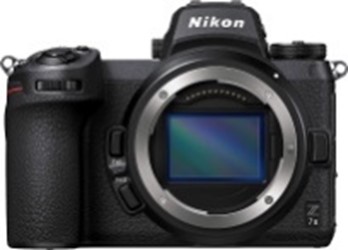
Nikon Z7 II uses the brand’s highest resolution backside illuminated CMOS sensor without an optical low-pass filter. You get the most detailed images when you pair it with NIKKOR Z lenses. The two EXPEED 6 processing engines work collectively for faster image processing, more overall speed, and more buffer capacity. The camera has the biggest full-frame lens mount (NIKKOR Z).
From Nikon’s superior color science and deep blacks to bright whites, the camera presents excellent dynamic range (from ISO 64 to 25,600) in videos and stills. The 5-axis VR image stabilization ensures photos’ sharpness and videos’ steadiness. It supports a maximum of five stops in up to five directions (pitch, yaw, roll, X, and Y).
The clear viewfinder comes with minimal blackout for high-speed shooting. Using this camera, you can make a 4K time-lapse movie and save all the full-resolution stills as well.
Specifications:
| Form factor | Mirrorless |
| Photo Sensor Size | Full Frame (35mm) |
| Photo Sensor Technology | CMOS |
| Effective Still Resolution | 45.7 MP |
| Maximum Webcam Image Resolution | 16 MP |
| Frame Rate | Up to 120 fps |
| Display Resolution Maximum | approx. 2100k-dot |
| Auto Focus Technology | Phase Detection |
| Aspect Ratio | 16:9, 1:1, 3:2, 4:5 |
| White balance settings | Auto, Incandescent, Daylight, Color Temperature, Fluorescent, Cloudy, Flash torch, Shade |
| Self Timer Duration | 20 seconds |
| JPEG quality level | Basic, Fine, Normal |
| Camera Flash | Hotshoe |
| Image Stabilization | Sensor-shift |
| Flash Modes Description | First-Curtain Sync, Off, Rear Curtain/Slow Sync, Rear Sync, Red-Eye Reduction, Slow Sync, Slow Sync/Red-Eye Reduction |
| Flash Sync Speed | 1/200 sec |
| Supported Image Format | RAW, TIFF, JPEG |
| Video Capture Format | MPEG-4 |
| Video Capture Resolution | 4K UHD 2160p |
| Video Input Format | NTSC/PAL |
| Video Standard | MPEG 4 |
| Color Depth | 14 Bits |
| Video Output Interface | 3.5mm audio, Mini HDMI |
| Lens Type | Zoom |
| Aperture Modes | F4.0 |
| Optical Zoom | 1 x |
| Maximum Aperture | 22 Millimeters |
| Minimum Aperture | 0.95 |
| Zoom Type | Optical Zoom |
| Autofocus Points | 493 |
| Compatible Mountings | Nikon Z |
| Focus Type | Manual Focus, Auto Focus |
| Maximum Focal Length | 0.95 Millimeters |
| Minimum Focal Length | 22 Millimeters |
| Photo Filter Thread Size | 52 Millimeters |
| Expanded ISO Maximum | 102400 |
| Expanded ISO Minimum | 64 |
| Max Shutter Speed | 1/8000 seconds |
| Min Shutter Speed | 30 seconds |
| Exposure Control Type | Manual, Automatic |
| Metering Description | Center Weighted |
| Shooting Modes | Bulb Mode, Time Mode, Aperture Priority, Auto, Manual, Program, Shutter Priority |
| Battery | 1x Lithium-ion (included); 5200 mAh capacity |
| Connectivity Technology | Bluetooth, Wi-Fi |
| Continuous Shooting Speed | 10 fps |
| Controller Type | Remote |
| Wireless Communication Technology | Bluetooth, Wi-Fi |
| Flash Memory Type | SDHC |
| Memory Slots Available | 2 |
| Special Feature | Dual EXPEED 6 Image Processors; 5-Axis In-Body Vibration Reduction; 493-Point Phase-Detect AF System |
| Hardware Interface | USB Type C, Bluetooth 4.0 |
| Audio Recording | Yes |
| Diaphragm Blades | 7 |
| Delay between shots | 3 seconds |
| Viewfinder Magnification | 0.8x |
| Viewfinder Type | Electronic |
| Display | 3.2-inch LCD |
| Display Fixture Type | Tilting |
| Touch Screen Type | Adaptive |
| Audio Output Type | Headphones |
| Dimensions and weight | 5.28 x 2.74 x 3.96 inches; 1.09 lbs |
2. Canon EOS R5: (14 stops)
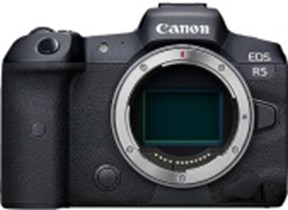 Check on Amazon | Check on Newegg
Check on Amazon | Check on Newegg
With 14 stops of dynamic range, you can easily recover the shadow details even in the most severe lighting conditions. The touchscreen simplifies the camera setup and the process of setting focus. The ability to calibrate dual back button focus is useful.
With the latest 45 MP CMOS sensor, Dual Pixel CMOS AF II, 8K DCI video, in-body image stabilization, and other features, the camera provides outstanding imaging performance for landscapes, portraits, cinematography, wildlife, etc.
4K and 8K video shooting is allowed in 10-bit 4:2:2 (H.265) with HDR PQ or Canon Log. You can access Dual Pixel CMOS AF II in all video modes. So you can have recordings with excellent clarity. In-body image stabilization provides up to 8 stops of shake correction for steady, smooth imagery.
With 1,053 Automatic AF zones, you can easily photograph people using face, eye, and head detection AF. Alternatively, using Animal Detection AF, you can smoothly track the whole body, eye, or face of dogs, cats, or birds.
Specifications:
| Form factor | Mirrorless |
| Photo Sensor Size | Full Frame (35mm) |
| Photo Sensor Technology | CMOS |
| Effective Still Resolution | 35.4 MP |
| Maximum Webcam Image Resolution | 45 MP |
| Display Resolution Maximum | 4096 x 2160 @ 60 Hz |
| Auto Focus Technology | Phase Detection |
| Aspect Ratio | 1.50:1, 16:9, 4:3 |
| White balance settings | Auto, Daylight, Tungsten, Custom, Cloudy, Shade |
| JPEG quality level | Basic, Fine, Normal |
| Camera Flash | Hotshoe |
| Image Stabilization | Sensor-shift |
| Flash Modes Description | eTTL |
| Flash Sync Speed | 1/250 sec |
| Supported Image Format | JPEG, RAW |
| Video Capture Format | 8k |
| Video Capture Resolution | 8K UHD 4320p |
| Video Input Format | NTSC/PAL |
| Color Depth | 14 Bits |
| Lens Type | Telephoto |
| Aperture Modes | F2.8 |
| Digital Zoom | 10 x |
| Compatible Mountings | Canon RF |
| Focus Type | Manual & Auto |
| Expanded ISO Maximum | 102400 |
| Expanded ISO Minimum | 50 |
| Max Shutter Speed | 1/8000 seconds |
| Min Shutter Speed | 1/8000 seconds |
| Exposure Control Type | Manual |
| Metering Description | Center-weighted average, Evaluative, Partial, Spot |
| Bandwidth | 18 Gigabits Per Second |
| Shooting Modes | Scene Intelligent Auto, Flexible priority AE, Program AE, Shutter priority AE, Aperture priority AE, Manual, Bulb, and Custom (x3). Movie: Scene Intelligent Auto, Program AE, Shutter priority AE, Aperture priority AE, Manual, Bulb and Custom (x3) |
| Battery | 1x Li-ion (included); 5200 mAh capacity |
| Connector Type | 1 x Micro-HDMI Male |
| Compatible Devices | Atomos Shinobi, Ninja V, Flame, and Inferno Series |
| Connectivity Technology | Bluetooth, Wi-Fi |
| Continuous Shooting Speed | Up to 12 fps (mechanical shutter), up to 20 fps (electronic shutter) |
| Controller Type | Remote |
| Wireless Communication Technology | Bluetooth, Wi-Fi |
| Flash Memory Type | Slot 1: CFexpress Type BSlot 2: SD/SDHC/SDXC (UHS-II) |
| Memory Slots Available | 2 |
| Special Feature | DIGIC X Image Processor; Sensor-Shift 5-Axis Image Stabilization; Subject Tracking with Deep Learning |
| Water Resistance Level | Water Resistant |
| Digital Recording Time | Up to 29 Minutes, 59 Seconds |
| Hardware Interface | Bluetooth |
| Audio Recording | Yes |
| Viewfinder Magnification | 0.76x |
| Viewfinder Type | Electronic |
| Display | 3.2-inch LCD |
| Display Fixture Type | Tilting |
| Dots per screen area | 2,100,000 Dot |
| Dimensions and weight | 5.45 x 3.84 x 3.46 inches |
Pros:
Cons:
1. Sony a7R V: (15+ stops)
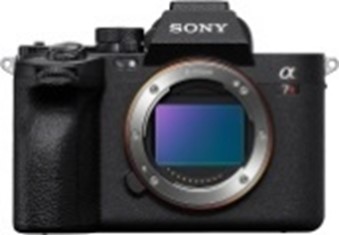 Check on Amazon
Check on Amazon
This camera implements cutting-edge AF with deep learning AI and real-time recognition autofocus.
The BIONZ XR processor and 61 MP Exmor R sensor provide shooting speeds of up to 10 fps with continuous AF/AE tracking. You can record 4K 60p/ 8K 24p video with a dynamic range of 15+ stops. The mentioned processor processes a large volume of image data, minimizes latency, and boosts the camera’s still image and movie processing power.
AI subject recognition supports various new subject types, including insects and vehicles. The latest 8-step stabilization algorithm offers accurate detection and control as low as the single-pixel level.
Due to an ultrasonic actuator, the filter in front of the image sensor oscillates at more than 70,000 cycles per sec. to remove dust.
Specifications:
| Form factor | Mirrorless |
| Photo sensor size | Full Frame (35 mm) |
| Effective Still Resolution | 61 MP |
| Maximum Webcam Image Resolution | 62.5 MP |
| Aspect ratio | 3:2 |
| Image recording formats | JPEG, HEIF, RAW |
| Image quality modes | JPEG (Extra fine / Fine / Standard / Light), RAW (Compressed / Lossless Compressed (L / M / S) / Uncompressed), HEIF (4:2:0 / 4:2:2) (Extra fine / Fine / Standard / Light), RAW & JPEG, RAW & HEIF |
| Image Picture profile | Yes (Off / PP1-PP11) Parameters: Black level, Gamma (Movie, Still, S-Cinetone, Cine1-4, ITU709, ITU709 [800%], S-Log2, S-Log3, HLG, HLG1-3), Knee, Black Gamma, Colour Mode, Saturation, Colour Depth, Colour Phase, Detail, Copy, Reset |
| Dynamic range functions | Off, Dynamic Range Optimiser |
| Color space | Adobe RGB standard, sRGB standard (with sYCC gamut), and Rec. ITU-R BT.2100 standard (BT.2020 gamut) |
| 14-bit Lossless RAW format | Supported with three selectable pixel counts: L (60M), M (26M), and S (15M) |
| Movie recording format | XAVC S, XAVC HS |
| Movie picture profile | Yes (Off / PP1-PP11) Parameters: Black level, Black Gamma, Gamma (Movie, Still, S-Cinetone, Cine1-4, ITU709, ITU709 [800%], S-Log2, S-Log3, HLG, HLG1-3), Colour Mode, Knee, Saturation, Colour Depth, Colour Phase, Detail, Copy, Reset |
| Movie functions | Audio Rec Level, Audio Level Display, Proxy Recording (1280 x 720 [Approx. 6 Mbps], PAL/NTSC Selector, 1920 x 1080 [Approx. 16 Mbps], 1920 x 1080 [Approx. 9 Mbps],), Auto Slow Shutter, TC/UB, RAW Output (HDMI), Gamma Disp. Assist |
| Video compression standards supported | XAVC S: MPEG-4 AVC/H.264, XAVC HS: MPEG-H HEVC/H.265 |
| Audio recording formats supported | LPCM 2ch (48 kHz/16 bit), LPCM 2ch (48 kHz/24 bit), LPCM 4-ch (48 kHz/24 bit), MPEG-4 AAC-LC 2ch |
| Video data format | YU420, MJPEG |
| Video resolutions supported for USB streaming | 3840 x 2160 (15p / 12.5p) / 1920 x 1080 (60p / 50p / 30p / 25p) / 1280 x 720 (30p / 25p) |
| Media card support | SD memory card, SDXC memory card (UHS-I/II-compliant), SDHC memory card (UHS-I/II-compliant), CFexpress Type A memory card |
| Memory card slot | Slot1: Multi slot for SD (UHS-I/II compliant) memory card / CFexpress Type A card; Slot2: Multi slot for SD (UHS-I/II compliant) memory card / CFexpress Type A card |
| Noise reduction features | Long exposure NR: On/Off, available at shutter speeds longer than 1 s; High ISO NR: Off/ Low/Normal |
| White balance modes | Daylight / Auto / Shade / Incandescent / Cloudy / Flash / Fluorescent / Colour Temperature (2,500 to 9,900 K)/ Underwater / Color filter / Custom |
| Shutter AWB lock | Supported |
| Focus type | Fast Hybrid AF (phase-detection AF / contrast-detection AF) |
| Focus sensor | Exmor R CMOS sensor |
| Focus area | Zone / Wide / Spot / Centre Fix / Expand Spot / Tracking |
| Focus sensitivity range | EV–4 to EV20 (ISO 100 equivalent with F2.0 lens attached) |
| Eye AF / Subject recognition AF | Animal (Right/Left Eye Select) / Human (Right/Left Eye Select) / Insect / Bird / Train / Car / Aeroplane |
| Focus modes | AF-S (Single-shot AF), AF-A (Automatic AF), DMF (Direct Manual Focus), AF-C (Continuous AF), Manual Focus |
| AF illuminator | Supported |
| Metering mode description | Centre-weighted, Multi-segment, Entire Screen Avg., Spot (Standard/Large), Highlight |
| Viewfinder type | 1.6 cm electronic viewfinder (Quad-XGA OLED) |
| Display | 8 cm TFT LCD with touch panel |
| Brightness control | Manual, Sunny Weather mode |
| Other features | Clear image zoom, digital zoom, face detection |
| Shutter type | Mechanical/Electronic shutter |
| Image stabilization type | Image Sensor-Shift mechanism with 5-axis compensation |
| Flash control | Pre-flash TTL |
| Flash modes | Autoflash, Flash off, Fill-flash, Rear Sync., Slow Sync., Red-eye reduction (on/off selectable), Hi-speed sync, Wireless |
| Wireless communication technology | Bluetooth, Wireless LAN, |
| Audio | Built-in stereo microphone, built-in speaker |
| Lens compensation settings | Chromatic Aberration, Peripheral Shading, Distortion, Breathing (Movie) |
| Dimensions and weight | 131.3 x 96.9 x 82.4 mm |
| Included accessories | Battery Charger BC-QZ1, Cable Protector, Power cord, Body cap, Shoulder strap, eyepiece cup, USB-A to USB-C cable (USB 3.2), Accessory shoe cap |
Pros:
Comfortable grip
Advanced autofocus
Intuitive menu interface
Cons:
Concluding Note:
The discussed mirrorless cameras can capture a broad range of tones in an image, from the darkest shadows to the brightest highlights. So, they are perfect for shooting scenes with high contrast, like landscapes with sunsets or snow.
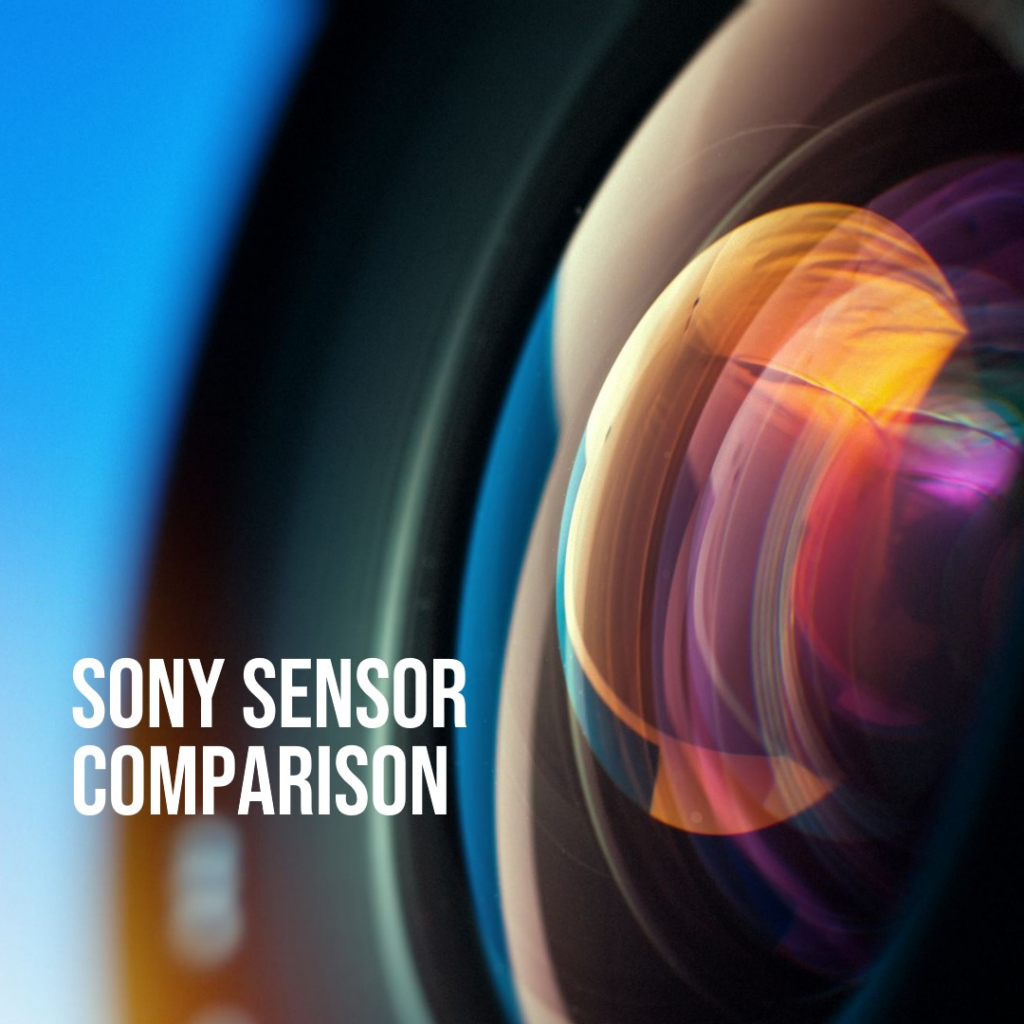


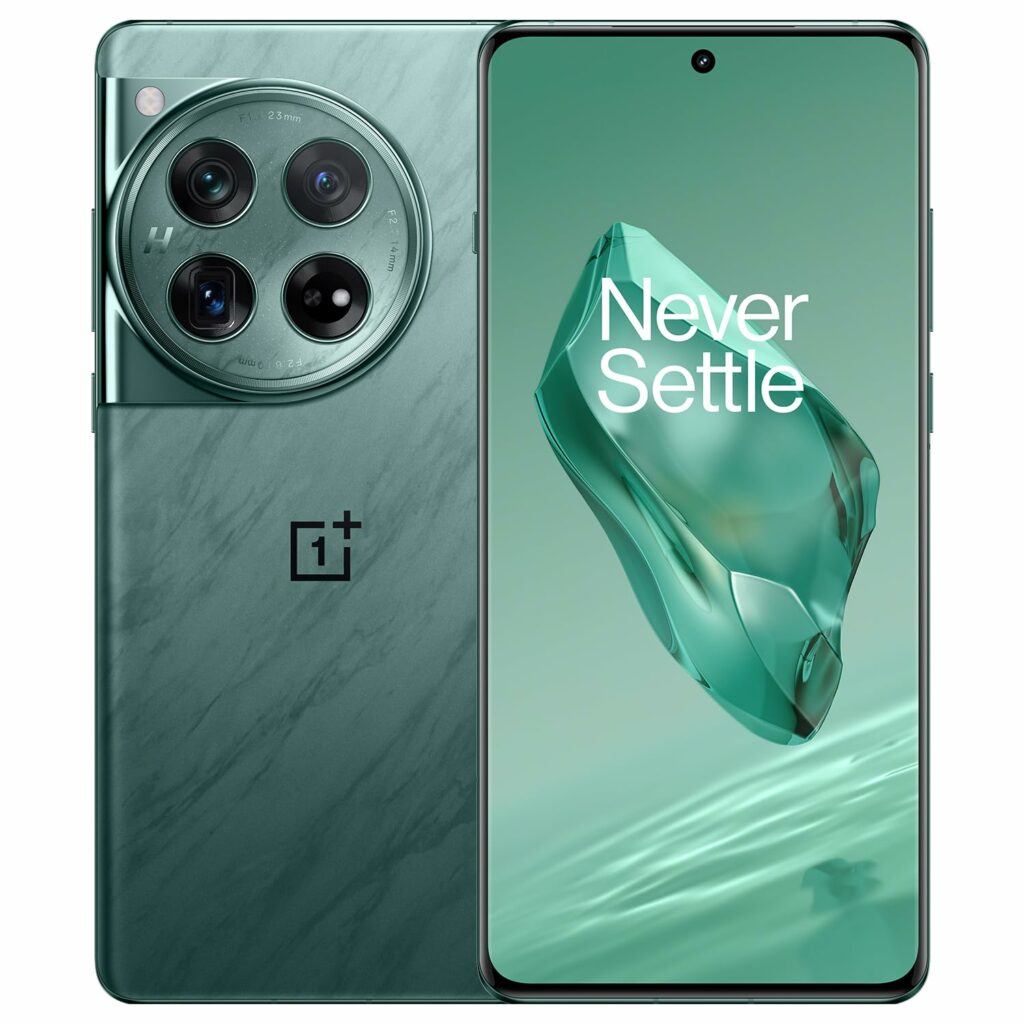

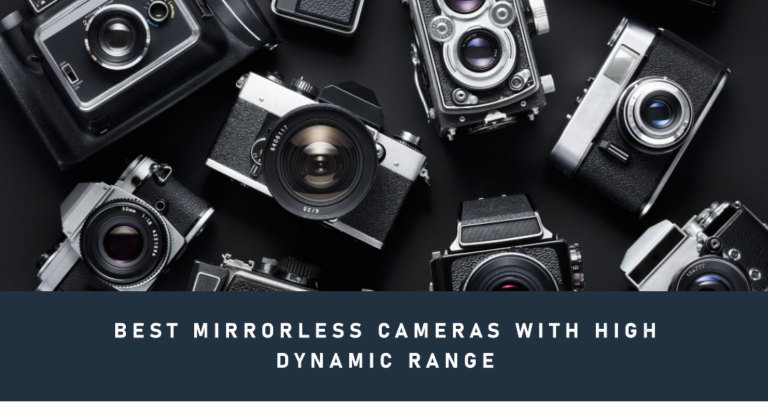














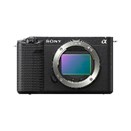
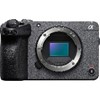




















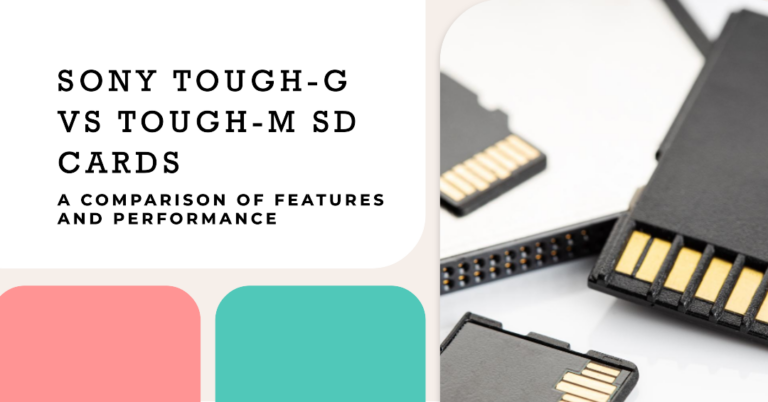
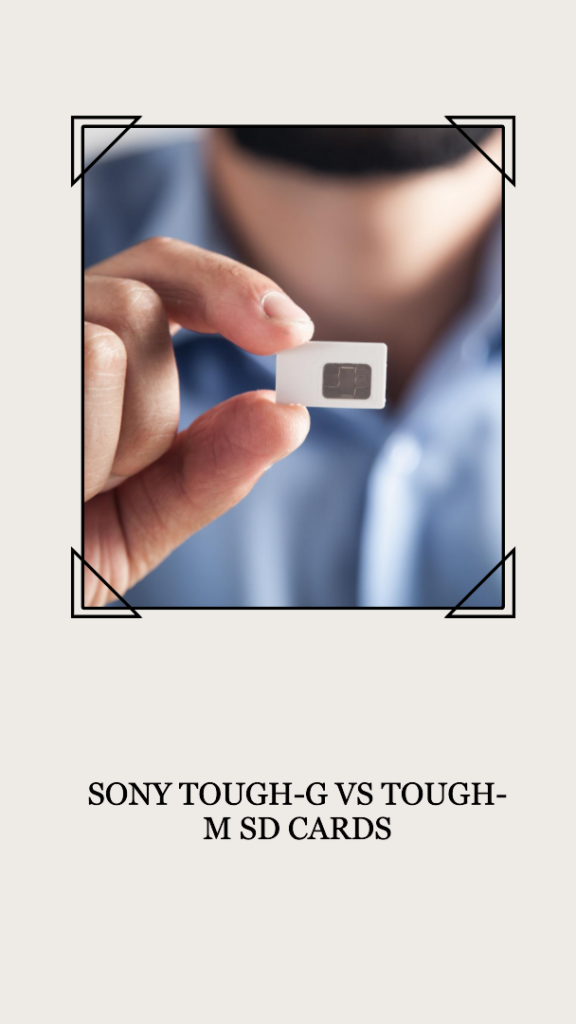
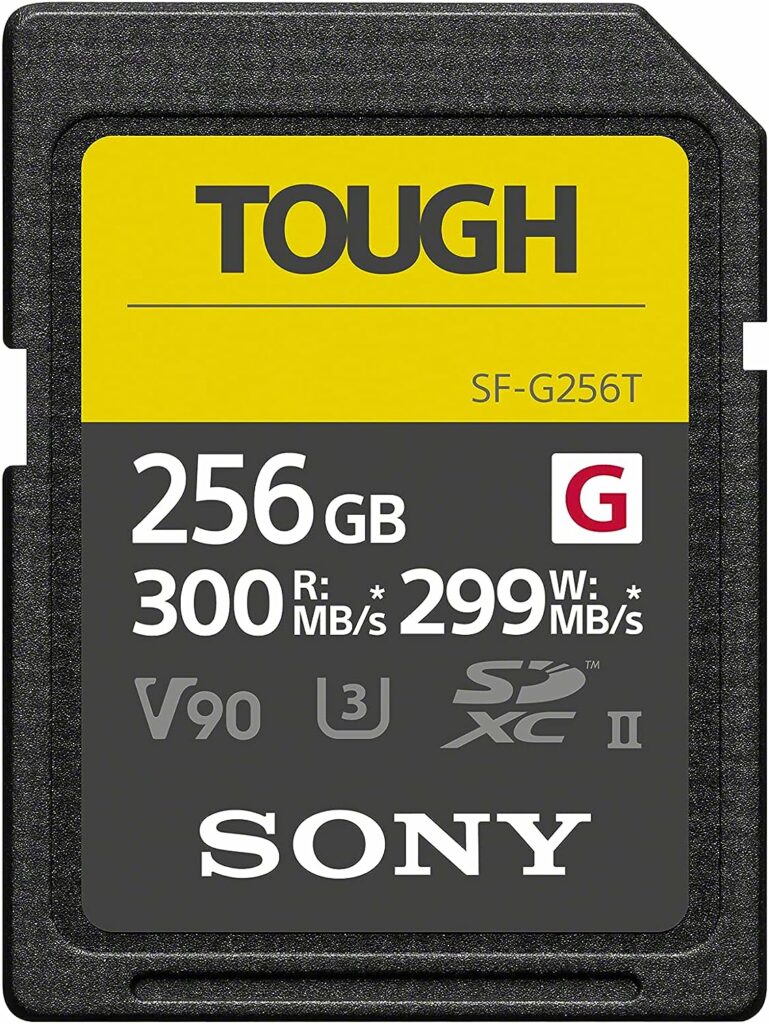 Check on Amazon
Check on Amazon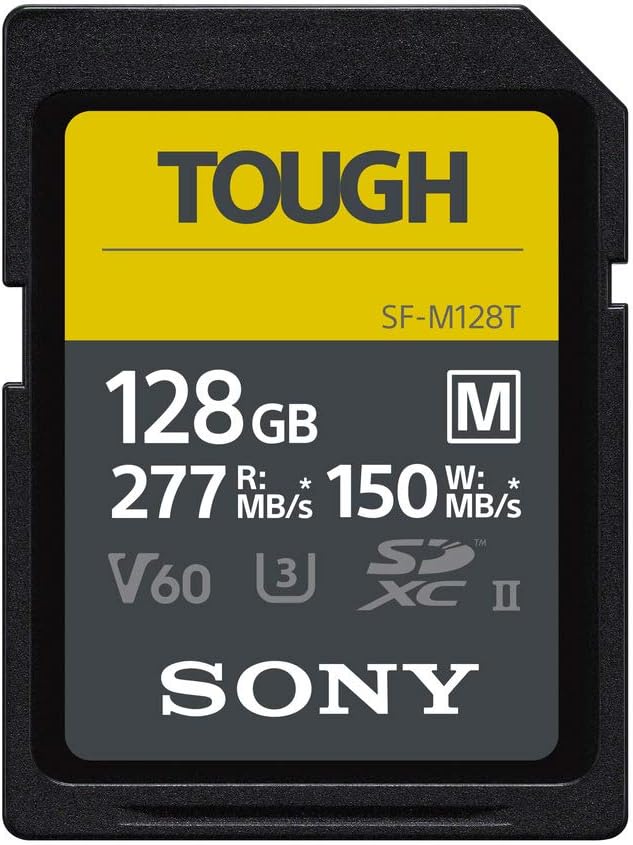 Check on Amazon
Check on Amazon